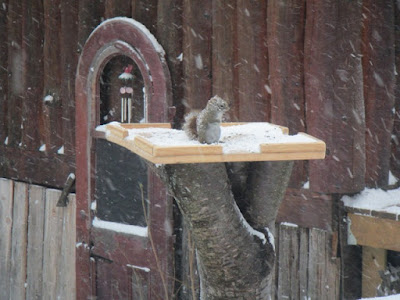The candle holders and
tree lights are back in their boxes. The darkness is receding and we’ve once
again celebrated the Earth’s orbit around the Sun.
There’s no doubt that
sunshine lifts up our spirits. Trips south, either real or dreamt, are tangible
proof that, like plants, we cherish the feeling of sunlight on our faces.
But our collective need
for light is much more than a blanket and a book at the beach.
We need light
for guidance and what better example than a lighthouse. For all around the
world, from the ancient Egyptian island of Pharos, to the inland sea of Lake
Superior, lighthouses have banished the obscurities of darkness. At one time they
were an essential part of our journeys on water. How else to avoid rock and
navigate from here to there?
Before highways altered
our relationship with Superior, ship traffic was crucial. In 1901, the Algoma
Central Steamship Line, which transported Helen Mine iron ore from Michipicoten
Harbour to the steel mill in Sault Ste Marie, erected a navigation light atop a
bluff at the northwest end of Coppermine Point, which is about 75 kilometres
north of the Sault. The light rested on a four metre tower 15 m above the lake.
On a clear night mariners could see the shine from a distance of 20 km.
In 1904 the Canadian
Government took on responsibility for the light and hired John Joseph Roussain as
the keeper. Roussain kept the lantern lit until he died in 1909.Then his son,
Frank Edmund Roussain, took up the job. Frank was light keeper until 1923 when
the government changed the light to an unmanned acetylene unit that could turn
itself off and on. Ahhh automation!
On September 15, 1908, the
Roussains got to see an enclosed lighthouse replace the original open-sided
tower. The new permanent structure, 11m from base to top, cost $1200 and was quite the fancy affair. The square white wooden building
with sloping sides supported a red iron lantern which housed a new French lens.
And this Coppermine Point Lighthouse, standing 20 m above Lake Superior, was
destined for greatness. A.Y.Jackson immortalized the structure when a calm day
allowed him to sit offshore in a boat and create a painting of the wistful
building.
One of the most remote
light stations on Lake Superior is right in the middle of the lake. Caribou
Island is magic and mystery in real time. It’s a small island, the flat top of
an underwater mountain, with squeaky golden sand on the east side and layers of
red sandstone on the rest of the shoreline. The navigation light for this mid
lake jewel sits on a five acre islet offshore from Caribou itself. I visited
this elusive place in mid-September 1984 when Bert Hopkins and his wife, Pearl,
were the lightkeepers. I hiked around Caribou and even made that long climb up
a circular metal staircase in the 25 m light tower. ‘Twas a beauty day topped
off by a beauty meal. Sunshine, light breezes and Pearl even cooked a turkey
dinner.
Caribou Island’s first
light keeper was Charles Pim (of Pim Street fame). He served from 1887 to 1898.
Then it was Wibord Demers’turn.He lit the lamps from 1899 to 1906 and not
without incident. In December, 1904, the tug that was supposed to take Demers
and his helper Fred Pelletier back to the mainland for the winter couldn’t land
due to rough seas. There was panic until a rescue tug, at a cost of over $6000 plucked them away from the ice laden light station.
The romance of lighthouses
will never fade. Their stories connect our collective need for drama, survival
and light. Today one can see a remnant of those times past, not by braving ice-cold
seas but by driving about 78 km north on Highway 17 North. On the lake side, tucked
on a rocky ledge is that 1908 Coppermine Point Lighthouse.
When the government
tendered its destruction in 1968, a resourceful Ernie Demers dismantled the
structure and brought it from Coppermine Point to highlight his Lighthouse
Restaurant. The restaurant is gone as is the freshness of the lighthouse paint
but the memories still shine through the air.
Yes Light stations do
feed our imaginations. Even though they no longer house people that climb long
stairs to light lamps, let’s hope that some semblance of that romance kindles
our desire to embrace the light. For really, isn’t that what we all want to see
at the end of the day?






